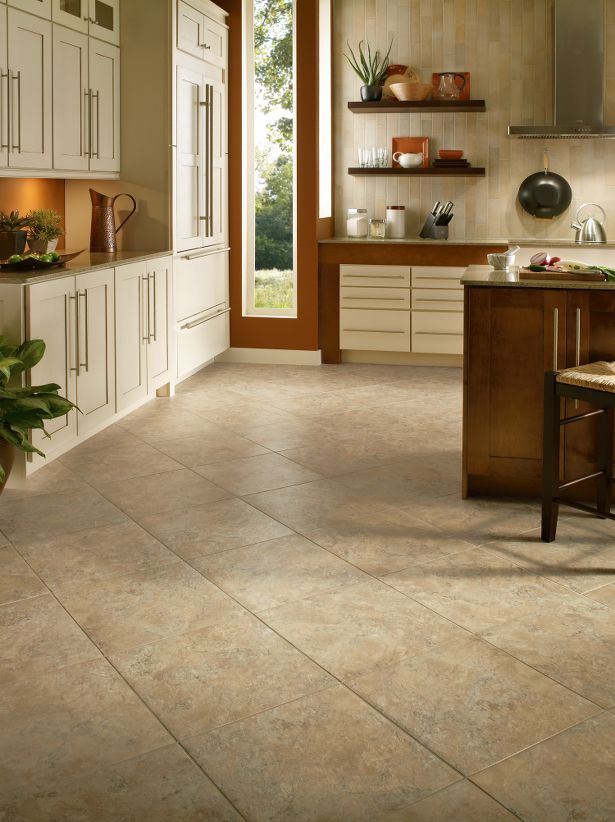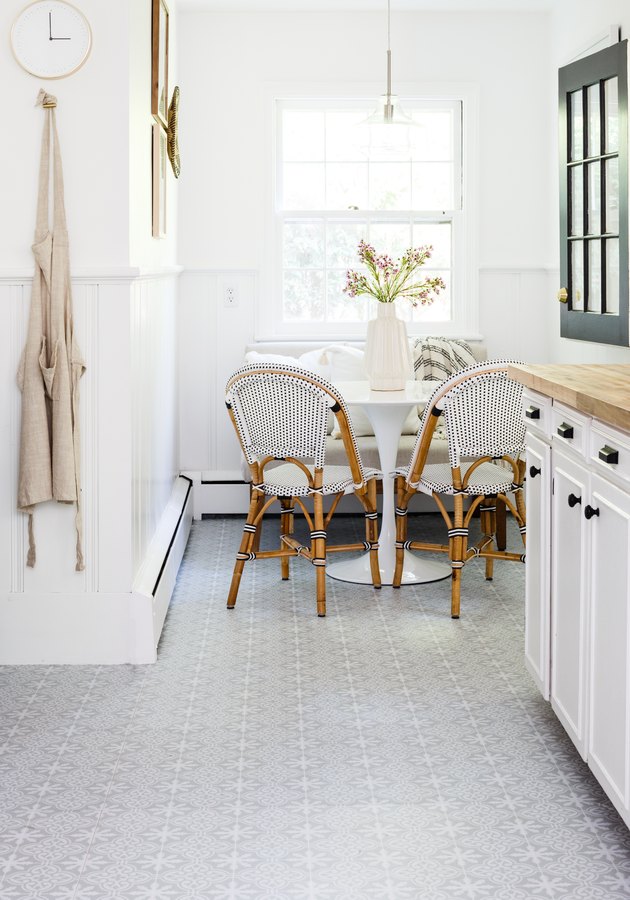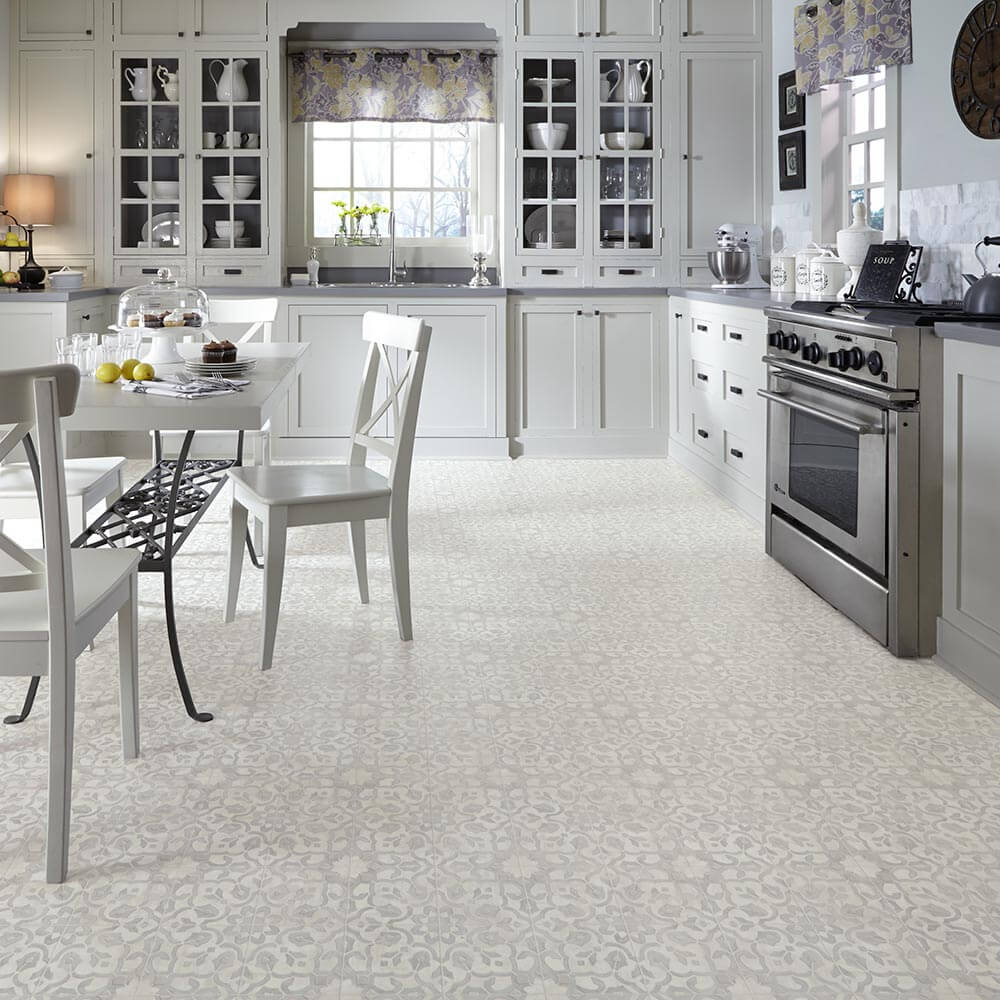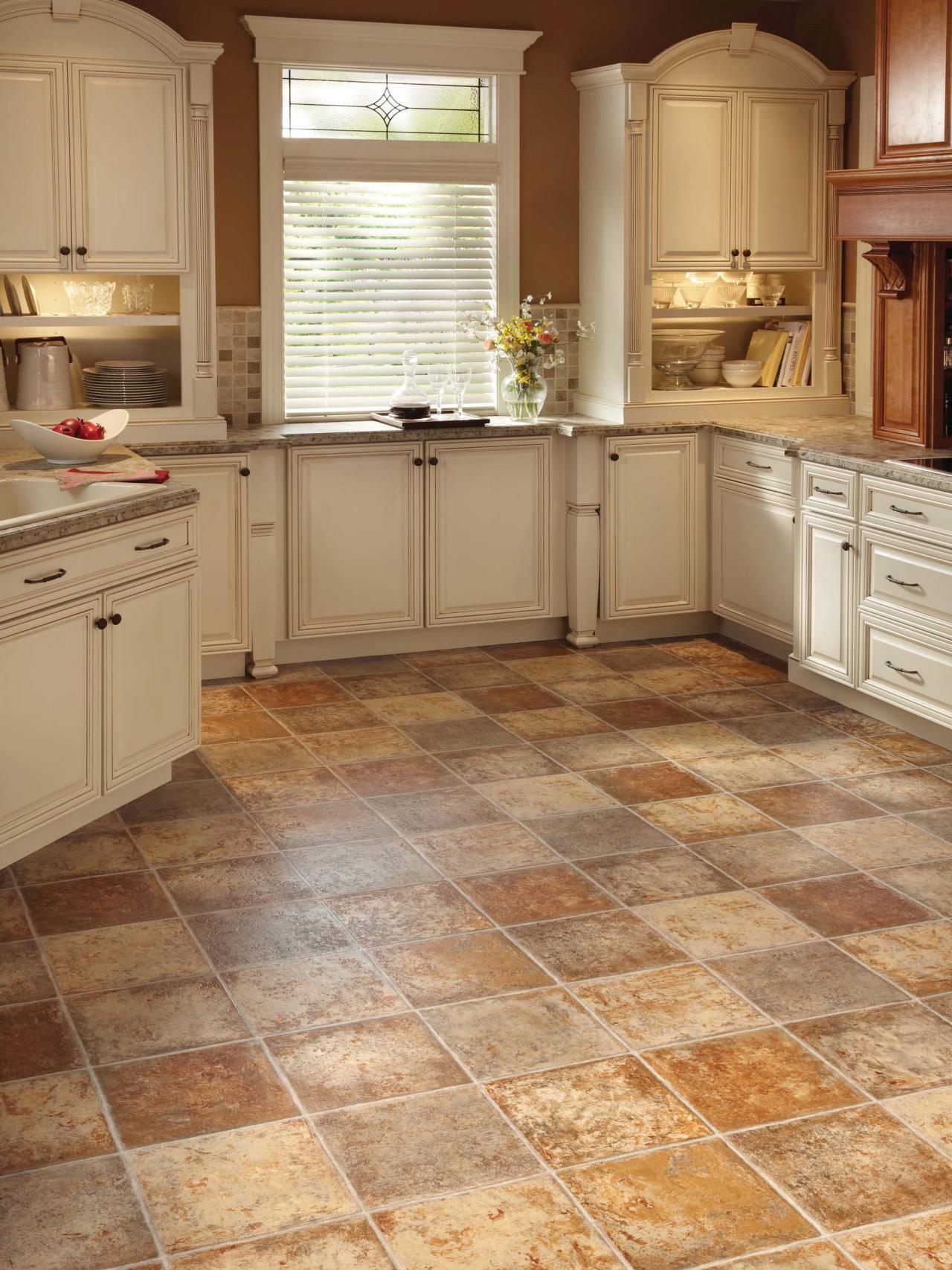Why Choose Vinyl Flooring for Your Kitchen?
Vinyl flooring has become an increasingly popular choice for kitchens due to its blend of durability, affordability, and aesthetic versatility. Unlike traditional flooring options such as hardwood or tile, vinyl offers a unique combination of practicality and style that makes it ideal for the high-traffic, high-moisture environment of a kitchen.
One of the main reasons homeowners opt for vinyl flooring in their kitchens is its impressive durability. Vinyl is water-resistant, which makes it a suitable choice for areas prone to spills and splashes. Its resilience against stains, scratches, and dents also means it can withstand the daily wear and tear that kitchens typically experience. This durability extends the lifespan of the flooring, making it a cost-effective option in the long run.
Affordability is another key factor that draws people to vinyl flooring. Compared to natural stone, hardwood, or ceramic tiles, vinyl is significantly less expensive both in terms of material costs and installation. Despite its lower price point, vinyl doesn’t compromise on quality or appearance. Advances in manufacturing have led to vinyl flooring that convincingly mimics the look of more expensive materials, allowing homeowners to achieve a high-end look without the high-end price.
The design versatility of vinyl flooring is perhaps its most appealing feature. Available in a wide range of colors, patterns, and textures, vinyl can complement any kitchen style, from modern to rustic. Whether you prefer the classic look of wood planks, the elegance of marble, or the contemporary appeal of geometric patterns, there’s a vinyl option to match your aesthetic vision. This adaptability ensures that vinyl can seamlessly integrate into any kitchen design scheme.
Exploring Different Types of Vinyl Flooring
Vinyl flooring comes in several forms, each with its own set of advantages. Understanding these options can help you choose the best type for your kitchen, ensuring that it meets your functional and aesthetic needs.
Sheet vinyl is one of the most common types of vinyl flooring. It is sold in large rolls and is typically installed in a single, seamless piece. This makes it highly water-resistant, as there are fewer seams where moisture can seep through. Sheet vinyl is an excellent choice for kitchens because it provides a continuous surface that is easy to clean and maintain. It also comes in a variety of designs, from solid colors to intricate patterns, offering plenty of options for customization.
Vinyl tiles are another popular option. These are individual tiles that can be arranged in various configurations to create unique patterns and designs. Vinyl tiles are often chosen for their ability to replicate the look of ceramic or stone tiles at a fraction of the cost. They are also easier to replace if damaged, as you can swap out individual tiles rather than replace the entire floor. This flexibility makes vinyl tiles a practical choice for busy kitchens where accidents are more likely to happen.

Luxury vinyl planks (LVP) are a newer type of vinyl flooring that has gained popularity for its realistic appearance and enhanced durability. LVP is designed to mimic the look of hardwood planks, complete with natural textures and grain patterns. It is thicker than traditional vinyl, providing added comfort underfoot and better sound absorption. Luxury vinyl planks are also highly resistant to water and scratches, making them ideal for high-traffic areas like kitchens.
Vinyl composite core (VCC) is an advanced form of vinyl flooring that combines the benefits of vinyl with additional strength and stability. VCC flooring features a rigid core made from a blend of vinyl and other materials, providing enhanced resistance to dents and impact. This type of flooring is particularly well-suited for kitchens, as it can handle heavy foot traffic and the occasional dropped pan without showing signs of wear. Its rigid structure also makes installation easier, as it can be installed over uneven subfloors without issues.
Design Ideas for Kitchen Vinyl Flooring
Choosing the right design for your kitchen vinyl flooring can transform the space, adding character and style that enhances the overall aesthetic of your home. With a vast array of options available, there are endless possibilities to explore.
One popular design trend is the use of vinyl flooring that mimics natural materials. Wood-look vinyl planks offer the warm, inviting appearance of hardwood floors without the maintenance challenges. These planks come in a variety of wood species and finishes, from classic oak and walnut to trendy whitewashed and distressed styles. This allows you to achieve the look of hardwood in a kitchen environment, where real wood might not be practical due to moisture concerns.
Stone-look vinyl tiles are another excellent choice for kitchens. These tiles replicate the elegant, timeless look of natural stone such as marble, slate, or travertine. The detailed patterns and textures of stone-look vinyl add a touch of sophistication to any kitchen design. Unlike real stone, vinyl tiles are softer underfoot and easier to maintain, making them a more practical option for busy households.
For those who prefer a more contemporary or eclectic look, patterned vinyl flooring can make a bold statement. Geometric patterns, intricate mosaics, and colorful designs can add visual interest and personality to your kitchen. Patterned vinyl flooring works well in modern and retro-inspired kitchens, offering a playful and unique alternative to traditional flooring options. This type of flooring allows you to express your creativity and customize your kitchen to reflect your personal style.
Neutral tones and minimalist designs are perfect for those who prefer a clean, understated aesthetic. Solid color vinyl floors in shades of gray, beige, or white create a sleek, modern look that complements a variety of kitchen styles. These neutral floors serve as a versatile backdrop, allowing you to highlight other design elements such as cabinetry, countertops, and decor. Minimalist vinyl flooring is also easy to coordinate with future design changes, making it a timeless choice for your kitchen.
Installation Tips for Vinyl Kitchen Flooring
Proper installation of vinyl flooring is crucial to ensure its durability and appearance. Whether you choose to install it yourself or hire a professional, following these tips can help achieve the best results.
Start with a clean, smooth subfloor. The subfloor should be free of any debris, dust, or moisture, as these can interfere with the adhesion of the vinyl. If the subfloor is uneven or damaged, it may need to be repaired or leveled before installation. Skipping this step can result in visible imperfections and reduce the lifespan of your vinyl flooring.
Measure the kitchen area accurately to determine the amount of vinyl needed. It’s always a good idea to purchase a little extra material to account for mistakes and future repairs. When cutting vinyl sheets or tiles, use a sharp utility knife to ensure clean, precise edges. For patterned designs, take extra care to match the patterns correctly, ensuring a seamless appearance.
When installing sheet vinyl, unroll it and let it acclimate to the room’s temperature for at least 24 hours. This helps prevent bubbling and ensures a better fit. Apply adhesive evenly across the subfloor before laying the vinyl sheet. Smooth out any air bubbles or wrinkles as you go, using a roller to ensure the vinyl adheres properly.
For vinyl tiles and planks, start from the center of the room and work your way outwards. This method helps ensure a balanced layout and reduces the likelihood of uneven cuts at the edges. Use spacers to maintain consistent gaps between tiles or planks, allowing for expansion and contraction due to temperature changes. Secure the tiles or planks according to the manufacturer’s instructions, which may include adhesive, click-lock systems, or peel-and-stick methods.
Maintenance and Care for Vinyl Kitchen Floors
Maintaining vinyl flooring in the kitchen is straightforward and helps preserve its appearance and longevity. Regular cleaning and proper care can keep your vinyl floors looking new for years.
Daily maintenance involves sweeping or vacuuming to remove dirt and debris that can scratch the surface. Using a soft-bristle broom or a vacuum without a beater bar is recommended to prevent damage. Spills should be wiped up immediately with a damp cloth to prevent staining and reduce the risk of slipping.
For deeper cleaning, use a mild detergent mixed with water. Avoid harsh chemicals and abrasive cleaners, as these can damage the vinyl surface. Mop the floor with the cleaning solution, then rinse with clean water to remove any residue. Ensure the floor is thoroughly dry before walking on it to prevent slipping.
Preventative measures can also help maintain your vinyl flooring. Place mats or rugs at entryways to trap dirt and moisture before it reaches the vinyl. Use felt pads under furniture legs to prevent scratches and dents. When moving heavy appliances or furniture, lift rather than drag them to avoid damaging the floor.
Regularly inspect the floor for any signs of wear or damage. If you notice any issues, such as peeling edges or scratches, address them promptly to prevent further deterioration. For minor damage, vinyl repair kits are available that allow you to fix small imperfections yourself. For more significant damage, consider consulting a professional to ensure proper repair and restoration.
Eco-Friendly Vinyl Flooring Options
For environmentally-conscious homeowners, eco-friendly vinyl flooring options are available that reduce the environmental impact while still offering the benefits of traditional vinyl.
Recycled vinyl flooring is made from post-industrial and post-consumer waste, reducing the amount of new materials needed. This type of flooring offers the same durability and design versatility as standard vinyl, but with a smaller environmental footprint. By choosing recycled vinyl, you contribute to reducing landfill waste and conserving natural resources.
Low-VOC (volatile organic compounds) vinyl flooring is another eco-friendly option. Traditional vinyl can emit VOCs, which contribute to indoor air pollution and have potential health risks. Low-VOC vinyl flooring is manufactured using processes that limit or eliminate these emissions, providing a safer and healthier indoor environment. This is particularly important in kitchens, where food preparation and family activities frequently occur.
Bio-based vinyl flooring is made from renewable resources such as corn, soybeans, and other plant materials. These floors offer a sustainable alternative to petroleum-based vinyl, reducing dependence on fossil fuels and decreasing carbon emissions. Bio-based vinyl flooring combines eco-friendly materials with the durability and aesthetic appeal of traditional vinyl, making it a great choice for environmentally-conscious homeowners.
Certifications such as FloorScore and GreenGuard can help identify eco-friendly vinyl flooring options. These certifications ensure that the flooring meets stringent indoor air quality standards and has been tested for harmful emissions. Choosing certified products provides peace of mind that your flooring is safe for your home and the environment.
Common Mistakes to Avoid
Choosing and installing vinyl flooring for your kitchen can be a rewarding process, but several common mistakes can undermine your efforts. Avoiding these pitfalls can help ensure a successful project.
Neglecting Proper Preparation: Skipping the crucial step of preparing the subfloor can lead to a range of issues. A clean, level subfloor is essential for proper vinyl adhesion and longevity. Failing to address imperfections can result in visible bumps and premature wear.
Using the Wrong Adhesive: Not all adhesives are suitable for all types of vinyl flooring. Using the wrong adhesive can lead to peeling, bubbling, and inadequate bonding. Always follow the manufacturer’s recommendations for adhesives to ensure a secure and lasting installation.
Overlooking Acclimation: Vinyl flooring needs time to acclimate to the room’s temperature and humidity before installation. Skipping this step can cause the flooring to expand or contract after installation, leading to gaps and buckling. Allow the flooring to acclimate for at least 24 hours before laying it down.
Ignoring Maintenance Guidelines: Using harsh cleaners or neglecting regular maintenance can damage vinyl flooring. Stick to recommended cleaning products and methods to preserve the floor’s appearance and durability. Regular sweeping, mopping, and immediate spill cleanup are essential for maintaining vinyl floors.
How durable is vinyl flooring in a kitchen?
Vinyl flooring is highly durable and well-suited for kitchens. It is resistant to water, stains, scratches, and dents, making it ideal for high-traffic and high-moisture areas. Proper installation and maintenance can further enhance its lifespan, allowing it to withstand the rigors of daily kitchen use. With regular care, vinyl flooring can last for many years without significant wear and tear.
Is vinyl flooring safe for families with children and pets?
Yes, vinyl flooring is a safe and practical choice for families with children and pets. Its water-resistant and easy-to-clean surface makes it ideal for handling spills, accidents, and pet-related messes. Additionally, modern vinyl flooring options are available in low-VOC formulations, which improve indoor air quality and reduce exposure to harmful chemicals. The soft, cushioned feel of vinyl also provides a comfortable surface for children to play on.
Can vinyl flooring be installed over existing kitchen floors?
Vinyl flooring can often be installed over existing floors, provided the current surface is clean, dry, and level. It can be laid over a variety of substrates, including concrete, wood, and even some types of tile. However, any imperfections or damage in the existing floor should be repaired before installation to ensure a smooth and secure fit. Consulting the vinyl flooring manufacturer’s guidelines can help determine the best approach for your specific situation.
How do I choose the right design for my kitchen vinyl flooring?
Choosing the right design involves considering the overall style and color scheme of your kitchen. Wood-look vinyl planks add warmth and a classic feel, while stone-look tiles offer a touch of elegance. For a modern or eclectic vibe, consider geometric patterns or bold colors. It’s also important to think about the size of your kitchen; lighter colors and simpler designs can make a small kitchen feel larger, while darker tones and intricate patterns can add depth to a spacious kitchen.
What are the benefits of luxury vinyl planks (LVP) in a kitchen?
Luxury vinyl planks (LVP) offer several benefits for kitchen use. They are designed to mimic the look of hardwood, providing a high-end appearance with enhanced durability. LVP is thicker than standard vinyl, which adds comfort and sound absorption. It is highly resistant to water and scratches, making it ideal for the kitchen environment. Additionally, LVP is relatively easy to install and maintain, making it a practical and stylish flooring option for any kitchen.
Alluring Kitchen Floor Ideas You Must Have (2018) Kitchen vinyl, Best flooring for kitchen
Kitchen Vinyl Flooring Ideas Pictures
Home Improvement & Flooring solutions
Flooring for a 1970s kitchen or living area: Moroccan-style Filigree luxury vinyl flooring from
Harvey Maria Flooring – Cath Kidston – Neisha Crosland Vinyl flooring kitchen, Kitchen
Polyflor Camaro Wood Flooring 2220 Vinyl flooring kitchen, Luxury vinyl tile flooring, Luxury
Kitchen Vinyl Flooring Ideas
vinyl flooring patterns
Caldera Vinyl flooring, Tile floor, Flooring
Related Posts:













